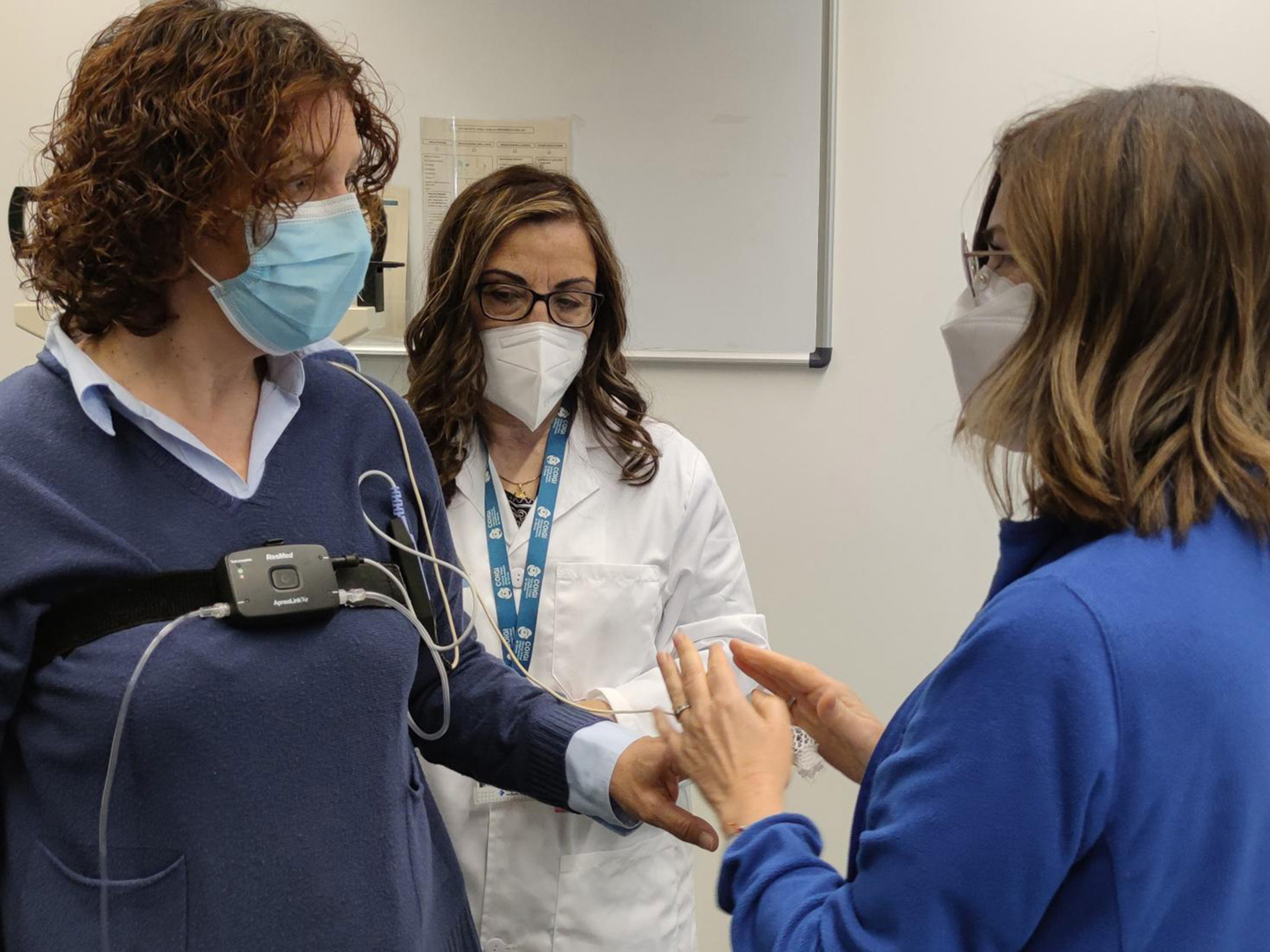More than 650 people have already been assessed for sleep apnea in Girona’s Primary Care centres
1 of December of 2022
The INNOBICS-SAHS project, which started on April 2022 and is focused on using primary care centres to improve the diagnosis and treatment of obstructive sleep apnea to Girona, has obtained its first results. The project, which will run for 3 years, was put forward by the Pneumology Teams based at Trueta Hospital in Girona and Santa Caterina Hospital in Salt following years of research and leading clinical practice in diagnosing and treating the disease at the Girona hospital, several primary care centres run by the Catalan Health Institute (Institute Català de la Salut – ICS) and the Girona Health Region’s Health Care Institute (Institut d’Assistència Sanitària – IAS).
Sleep apnea syndrome is a highly prevalent disease that affects 25% of people between the ages of 30 and 70 and becomes more prevalent with increased age and body mass index. However, it’s also an under-diagnosed disease, with only 10% of cases being diagnosed in Spain’s specialist hospital units, which often have waiting lists of more than a year. INNOBICS-SAHS SAHS aims to make it easier for patients to be diagnosed and treated at their primary care centre. To this end, it set up a Virtual Sleep Unit, run by professionals and specialist nursing staff from the Pneumology Department, in the Sleep Unit at Hospital Josep Trueta. This Virtual Unit provides the human and technical resources necessary to offer diagnosis and treatment as a primary care service. In parallel, the primary care centres involved were assigned a specially trained sleep nurse to fulfil the new role of coordinating with and being supervised by the hospital’s Virtual Unit, i.e. sleep pathology specialists from the Pneumology Department.
Currently, the project is up and running at the Girona Health Region’s primary care facilities in Salt, Celrà, Sarrià, Anglès and Taialà, and this week it will be launched in Sils-Vidreres-Maçanet, Santa Coloma de Farners and Arbúcies-Sant Hilari. A total of 658 patients (430 men, 228 women) have been assessed this year using the new model, 78% of whom have been diagnosed with sleep apnea and successfully treated by primary care. Of the remaining 22%, 19% were referred to the hospital sleep unit for further testing, while the remainder were discharged after a diagnosis of sleep apnea was ruled out.
The project will be launched in the Basic Health Areas (ABS) of Santa Clara and Montilivi in Girona at the end of this year, and during 2023 it will be rolled out in Banyoles, Cassà de la Selva, Breda-Hostalric and Can Gibert del Pla in Girona. By this point, the implementation will cover all the Basic Health Areas that refer patients to the Trueta and Santa Caterina hospitals, and the project will be extended to reach other areas of the region.
How are the diagnosis and follow-up procedures conducted?
Firstly, a short questionnaire (no more than a minute long) has been drafted for primary care doctors or nurses to pass on to patients in order to assess their risk of sleep apnea. If this initial screening comes back positive, the patient is referred to the sleep nurse assigned to their local CAP.
The patient will then attend an appointment with the sleep nurse at the CAP to provide their digital medical history and collect an electromedical device (sleep polygraph), which, until now, was only dispensed by hospital sleep units. Next, they will use the device for one night at home to monitor their sleep and respiratory constants.
Lastly, after the pneumology specialists running the Virtual Sleep Unit have analysed the sleep study and assessed the patient’s clinical history via a virtual platform, they will communicate the patient’s diagnosis and recommended course of treatment remotely.
Obstructive sleep apnea
Obstructive sleep apnea is a disorder that causes an obstruction of the upper airway during sleep due to a relaxation of the throat muscles. Sufferers may wake up several times during the night with a choking sensation, although they are often unaware of the episode because they fall back to sleep quickly. Other symptoms include snoring and snorting during sleep and excessive daytime tiredness, a common cause of traffic and occupational accidents. The condition is also linked to several cardiovascular diseases.
The team behind the project say the new diagnostic procedure will reduce the waiting time for patients requiring referral to hospital sleep units to 30 days. In Catalonia, the diagnostic process will be tested in designated primary care centres for a period of three years, after which a proposal will be submitted for its implementation in other Catalan primary care centres and, ultimately, other Autonomous Communities and European countries.
The project has a budget of 3.1 million euros, and is being co-funded by EIT Health and the nine participating entities: Catalan Health Institute of Girona, Dr. Josep Trueta Biomedical Research Institute of Girona (IDIBGI), TIC Salut Social Foundation, Centro Hospitalar Lisboa Norte, Pulso Ediciones, TRC Informática, Interuniversitair Micro-Electronica Centrum, ResMed Spain, and OXIGEN Salud.
At an international level, the role of EIT Health, a network of more than 150 partners supported by the EU’s Institute of Innovation and Technology, will be key to the project, granting INNOBICS-SAHS extensive access to the knowledge and skills of all their European associates.
-
Sleep apnea syndrome is a highly prevalent disease that affects 25% of people between the ages of 30 and 70 and becomes more prevalent with increased age and body mass index.


